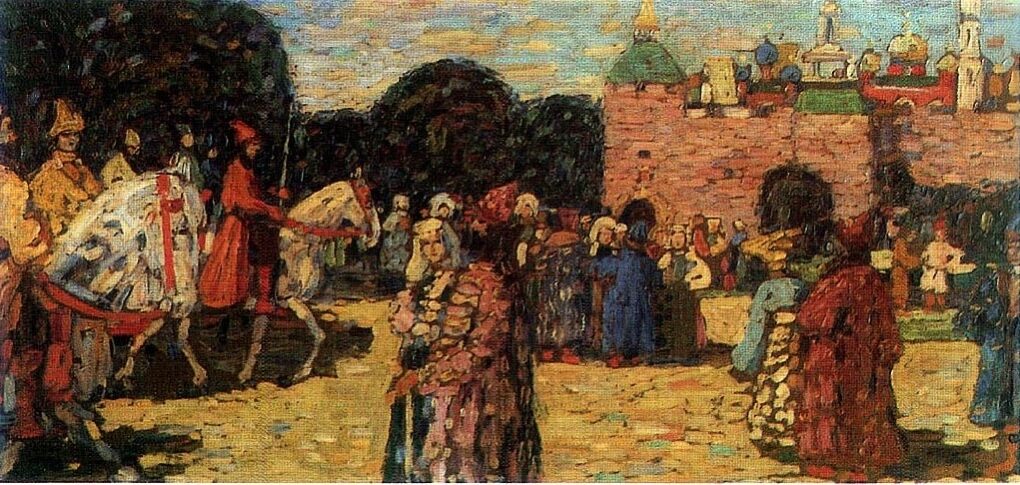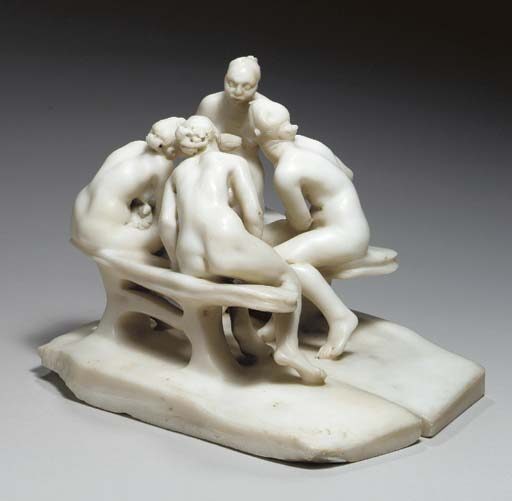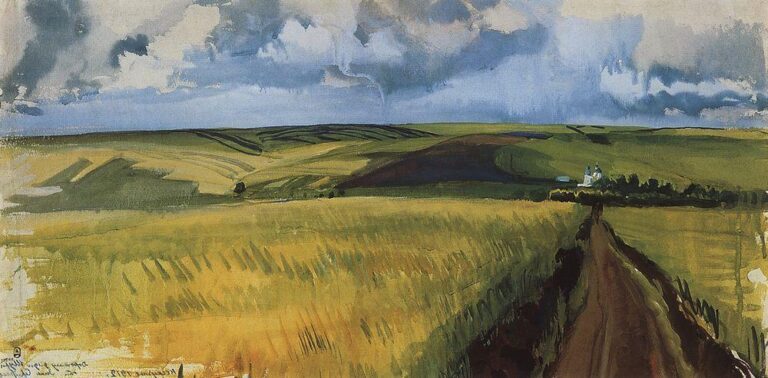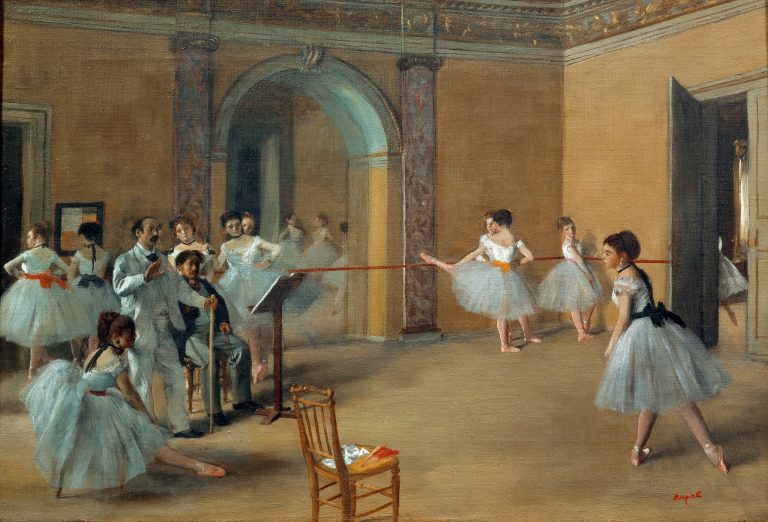Wassily Kandinsky Painter: Pioneer of Abstract Art and Visual Music
Born: 16 December [O.S. 4 December] 1866
Moscow, Russian Empire
Death: 13 December 1944, Neuilly-sur-Seine, France
Art Movement: Expressionism, Abstract Art
Nationality: Russian, later French
Teachers: Franz von Stuck
Institution: Academy of Fine Arts
Wassily Kandinsky Painter: Pioneer of Abstract Art and Visual Music
Life and Career of Wassily Kandinsky
Wassily Kandinsky’s journey from a law student to a pioneering abstract artist spanned across Russia, Germany, and France. His artistic evolution was shaped by his experiences in Moscow, Munich, and at the Bauhaus, as well as his relationships with other artists.
Early Life and Education in Moscow
Born on December 16, 1866, in Moscow, Kandinsky initially pursued a career in law. He worked as a law professor until age 30, when he made the bold decision to leave this secure profession for art.
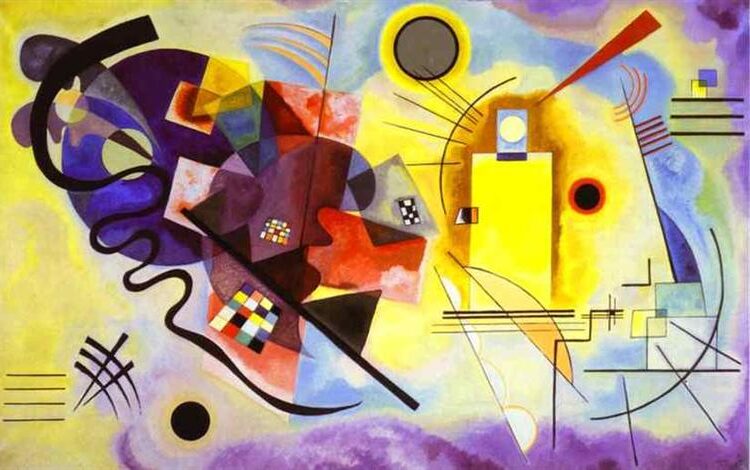
Yellow-Red-Blue, 1925 by Wassily Kandinsky
His early years in Moscow influenced his future artistic sensibilities. The vibrant colors of Russian folk art and architecture left lasting impressions on his visual memory.
In 1896, Kandinsky moved to Munich to study at Anton Ažbe’s private school. This marked the beginning of his formal artistic education, though he had always shown interest in color and form from childhood.
His Russian heritage remained important throughout his career, even as he lived abroad for most of his adult life.
Artistic Development and the Munich Period
In Munich, Kandinsky’s artistic style evolved dramatically. From 1911 to 1914, he co-founded the influential “Blaue Reiter” (Blue Rider) group with other progressive artists.
This period marked his crucial transition toward abstraction. Kandinsky began reducing recognizable objects to colored shapes and lines, believing that colors could directly express emotions without representing physical objects.
His relationship with German artist Gabriele Münter proved significant for his development. They lived together in Murnau, where the Bavarian landscape inspired many works.
When World War I began in 1914, Kandinsky returned to Moscow. The Russian Revolution created a briefly supportive environment for avant-garde art before Stalin’s later restrictions.
Bauhaus Years and Later Life in Paris
In 1922, Kandinsky accepted a teaching position at the Bauhaus school in Weimar, Germany. There, he refined his theories about color, form, and composition while teaching design.
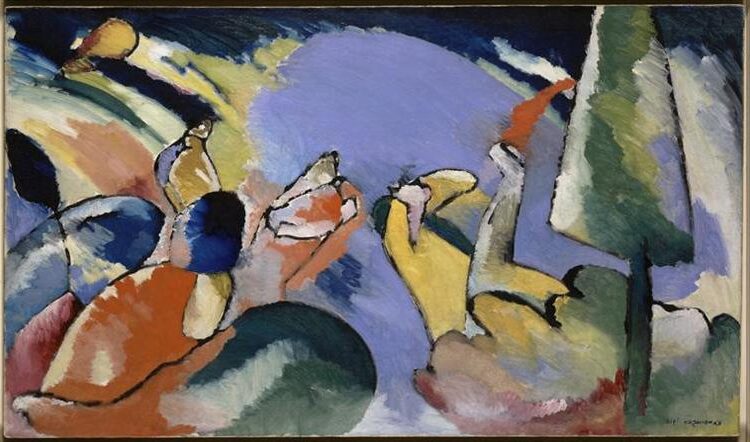
Improvisation 14, 1910 by Wassily Kandinsky
His Bauhaus years were productive artistically. His painting style became more geometric and precise, influenced by the school’s focus on combining art with functional design.
When the Nazis closed the Bauhaus in 1933, Kandinsky relocated to Paris. He became a French citizen and continued painting until his death on December 13, 1944.
The Paris period brought new elements to his work, including biomorphic forms inspired by surrealism. Despite difficult conditions during World War II, he created some of his most playful and complex compositions.
Artistic Philosophy and Influence
Kandinsky’s artistic philosophy centered on the spiritual dimensions of art and the emotional power of color and form. His theoretical framework revolutionized modern art by establishing principles that would influence generations of abstract artists.
Abstract Art and Inner Necessity
Kandinsky believed that true art must express what he called “inner necessity” – the artist’s spiritual and emotional impulses. This concept became the foundation of his approach to abstraction. He felt colors and forms had inherent emotional qualities that could directly affect the human soul.
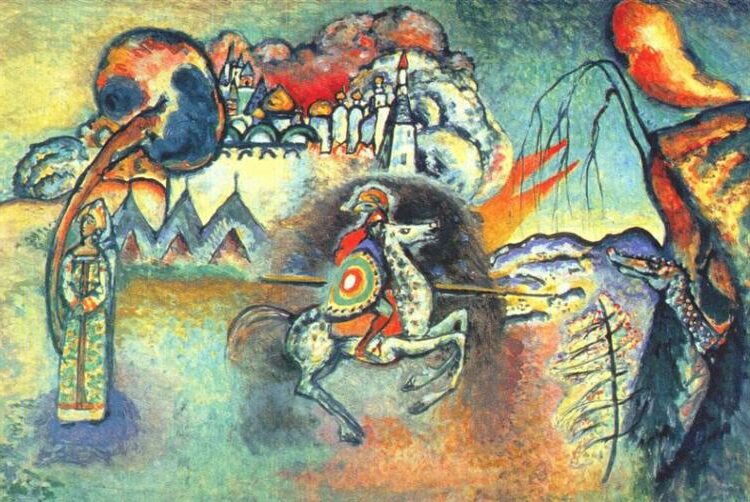
St. George and the Dragon, c.1915 by Wassily Kandinsky
For Kandinsky, abstraction wasn’t merely stylistic choice but a spiritual imperative. He wrote, “The artist must train not only his eye but also his soul,” emphasizing that art should communicate deeper truths beyond material reality.
His progression toward pure abstraction happened gradually as he stripped away recognizable objects to focus on the emotional impact of colors and shapes. By 1910, he had created some of the first truly abstract paintings in Western art, works that relied solely on non-representational forms.
Foundation of Der Blaue Reiter
In 1911, Kandinsky and Franz Marc founded Der Blaue Reiter (The Blue Rider) group in Munich. This artistic movement rejected conventional aesthetic values and championed subjective expression.
The group organized exhibitions featuring diverse styles that shared a common spiritual outlook. Kandinsky believed art should transcend cultural and stylistic boundaries while pursuing deeper spiritual truths.
Der Blaue Reiter publications featured Kandinsky’s writings alongside reproductions of folk art, children’s drawings, and non-Western art. This approach demonstrated his belief that authentic expression could take many forms across cultures.
Theoretical Contributions to Art
Kandinsky’s 1911 book “Concerning the Spiritual in Art” remains one of the most influential theoretical works in modern art. It articulated his belief that art should abandon materialistic concerns in favor of spiritual expression.
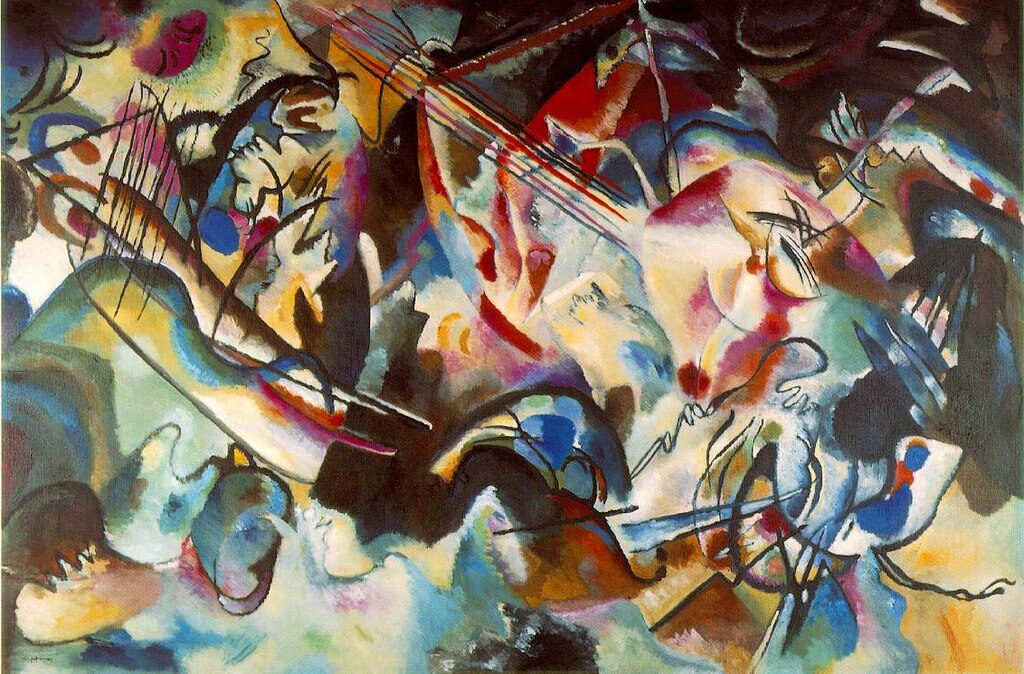
Composition VI, 1913 by Wassily Kandinsky
He developed a complex theory of color symbolism, assigning emotional and spiritual qualities to different hues. Yellow represented earthly aggression, while blue symbolized heavenly calm and spirituality.
Kandinsky’s teaching at the Bauhaus school (1922-1933) further spread his theories. His course “Form and Color Studies” taught students to understand the psychological effects of visual elements.
His analytical approach to composition influenced generations of artists and designers. Kandinsky’s theories provided a vocabulary for discussing abstract art that helped legitimize the movement beyond mere decoration.
Masterpieces and Legacy
Kandinsky’s artistic journey produced numerous groundbreaking works that continue to influence modern art. His theoretical writings and distinctive paintings established him as a pivotal figure in abstract art history.
Notable Works and Art Exhibitions
Composition VII (1913) stands as Kandinsky’s most complex masterpiece, featuring a whirlwind of colors and shapes that exemplify his mature abstract style. Created during his time in Munich, this oil on canvas work is now housed in the Tretyakov Gallery in Moscow.
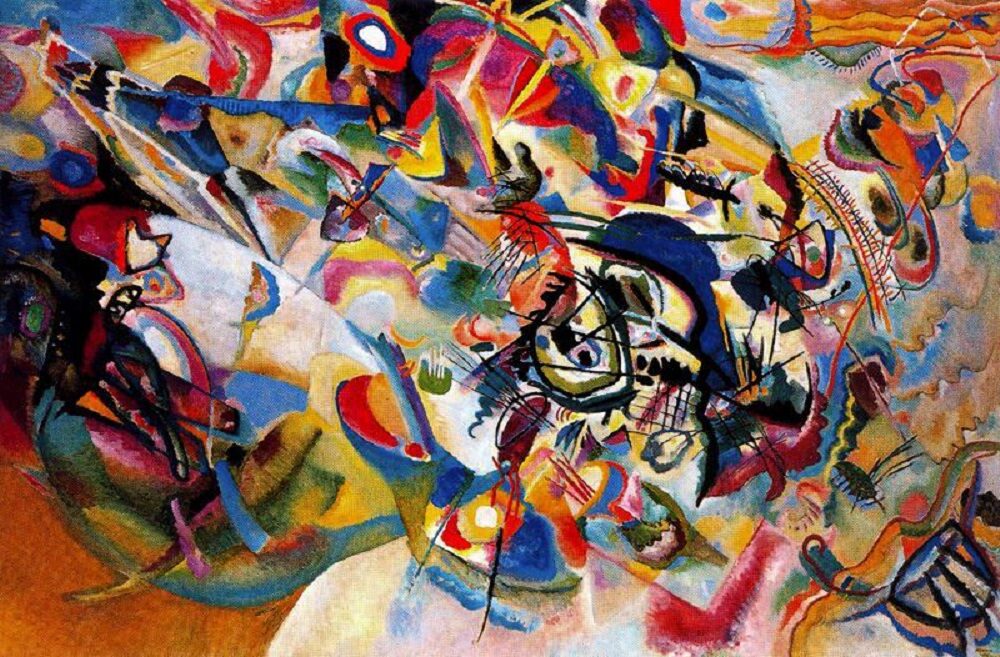
Composition VII, 1913 by Wassily Kandinsky
Composition IX (1936), produced during his Paris period, demonstrates his later geometric style with its cosmic imagery and precise forms. The Solomon R. Guggenheim Museum in New York holds the largest collection of Kandinsky’s works, including many of his pivotal paintings.
The National Gallery of Art in Washington DC also features important Kandinsky pieces. His works have been exhibited worldwide, with major retrospectives highlighting his progression from early Impressionist-influenced landscapes to pure abstraction.
Impact on Future Generations of Artists
Kandinsky’s theoretical writings, especially “Concerning the Spiritual in Art,” provided a foundation for abstract art that influenced countless artists. As a teacher at the Bauhaus, his ideas shaped a generation of creative thinkers.
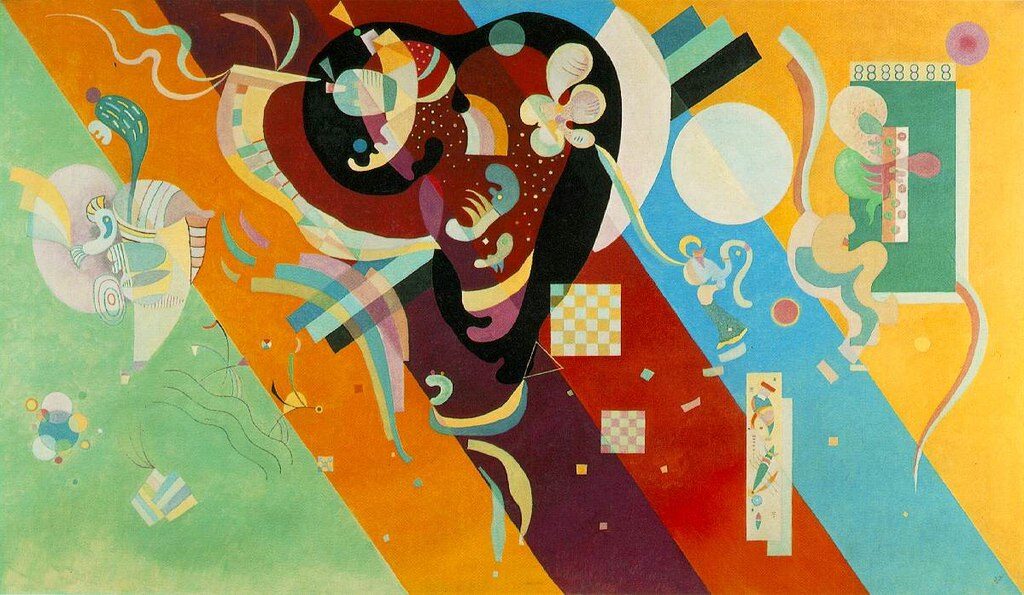
Composition IX, 1936 by Wassily Kandinsky
The formation of “The Blue Four” exhibition group with Paul Klee, Alexej von Jawlensky, and Lyonel Feininger helped spread his abstract vision throughout Europe and America during the 1920s.
His pioneering approach to Expressionism freed artists from representational constraints. Abstract Expressionists like Jackson Pollock and Willem de Kooning built upon Kandinsky’s belief in the emotional power of non-objective painting.
Contemporary artists continue to reference his theories about color relationships and the spiritual dimensions of abstract forms. His systematic approach to abstraction remains foundational to art education worldwide.
Frequently Asked Questions
Wassily Kandinsky revolutionized art through his pioneering abstract work and unique theories about color and form. His diverse background and evolving style continue to influence artists and art movements worldwide.
What artistic movement is Wassily Kandinsky best known for contributing to?
Wassily Kandinsky is widely acknowledged as one of the pioneers of abstract art. He moved away from representing objects in the physical world and instead created compositions of colors, shapes, and lines that expressed emotions and ideas.
His work helped establish and define Abstract Expressionism. Kandinsky believed that abstract forms and colors could directly affect the soul, creating a spiritual experience for viewers without relying on recognizable subjects.
How did Wassily Kandinsky’s background influence his artwork?
Kandinsky’s diverse background significantly shaped his artistic vision. Born in Moscow, his Russian heritage contributed to his use of vibrant colors and folk-inspired elements in early works.
His training in law and economics gave him an analytical approach to art theory. Later, his move to Germany exposed him to European art movements that influenced his style.
Kandinsky was a synesthete, meaning he could “hear” colors and “see” sounds. This unique neurological condition greatly influenced his approach to composition and color relationships in his paintings.
What are some of Wassily Kandinsky’s most famous works?
“Composition VII” (1913) stands as one of Kandinsky’s most recognized masterpieces, showcasing his fully developed abstract style with swirling forms and vibrant colors.
“Yellow-Red-Blue” (1925) demonstrates his theory of color relationships and geometric forms from his Bauhaus period. “Several Circles” (1926) exemplifies his fascination with the circle as a perfect geometric form.
His “Improvisations” series and “Composition VIII” (1923) are also highly regarded works that showcase his evolution as an abstract artist.
How did Wassily Kandinsky’s style evolve over the course of his career?
Kandinsky began with more traditional landscape paintings influenced by Impressionism. After seeing Monet’s work, he was inspired to pursue a more expressive approach to color and form.
His style progressed through his “Blue Rider” period, featuring semi-abstract works with recognizable elements. By 1913, he had developed a fully abstract style focused on the emotional power of color and line.
During his Bauhaus years (1922-1933), Kandinsky embraced geometric abstraction with precise shapes and clean lines. His final period in Paris featured more biomorphic forms and subdued colors influenced by Surrealism.
What techniques and mediums did Wassily Kandinsky employ in his paintings?
Kandinsky worked primarily with oil paints on canvas, but also explored watercolors, which allowed for more spontaneous expression. He often combined techniques, using both thin washes and thick impasto to create textural variety.
His brush techniques varied from precise geometric lines to loose, expressive strokes. Kandinsky developed a unique symbolic language with specific shapes representing different emotions and ideas.
He approached his canvases methodically, often creating numerous sketches and color studies before executing final works. This thoughtful process reflected his belief that art creation required both intuition and careful planning.
How has Wassily Kandinsky’s work impacted modern art and artists?
Kandinsky’s theories on color and form, outlined in his book “Concerning the Spiritual in Art,” provided a foundation for abstract art. His ideas about art’s spiritual dimension helped shift art away from pure representation.
His teaching at the Bauhaus school spread his artistic philosophy to numerous students. Major art movements including Abstract Expressionism, Color Field painting, and Op Art show clear influences from Kandinsky’s pioneering work.
Kandinsky’s integration of music and visual art concepts opened new possibilities for multidisciplinary approaches to creativity. His ideas about the psychological effects of color continue to influence fields beyond art, including design, architecture, and visual communication.

